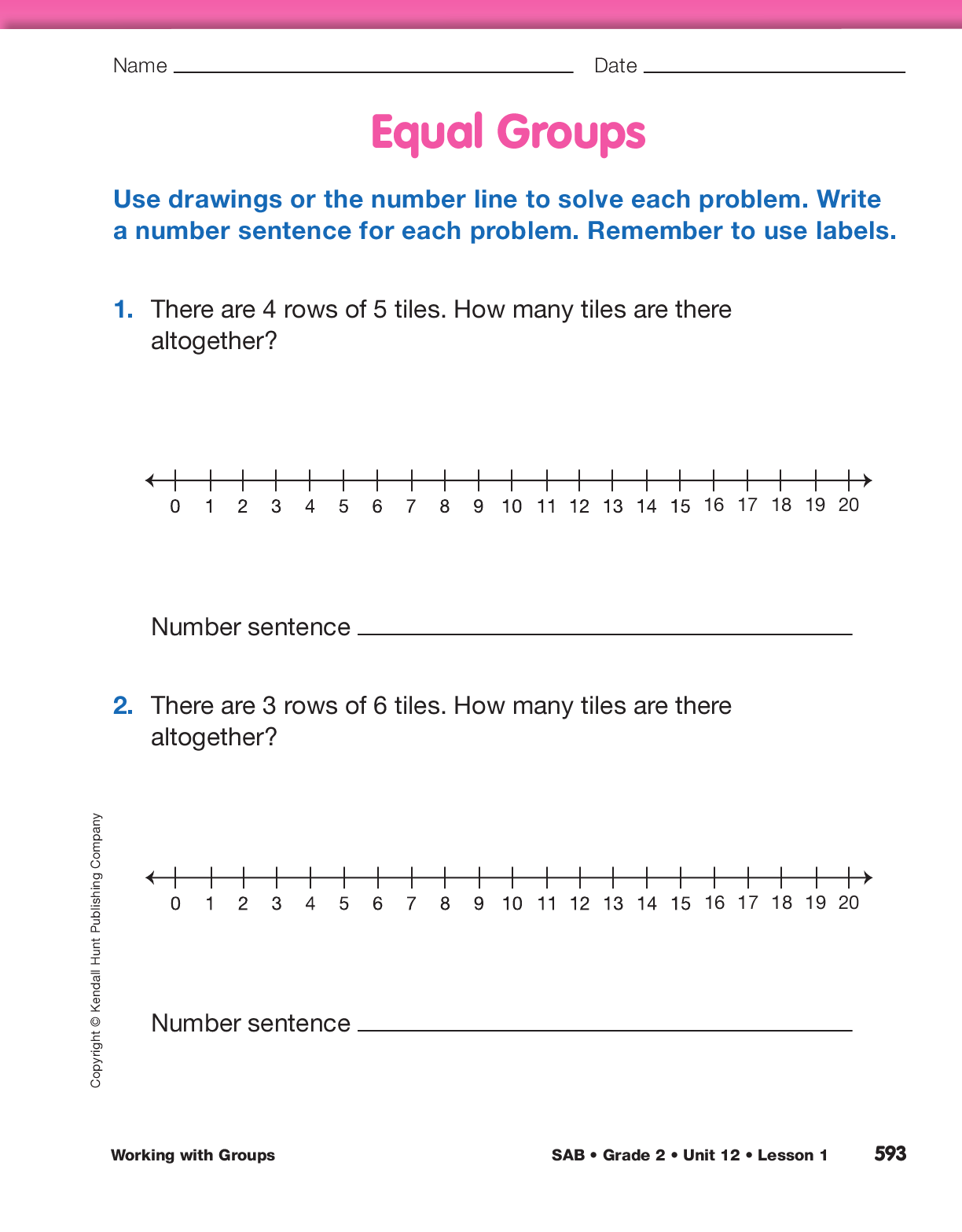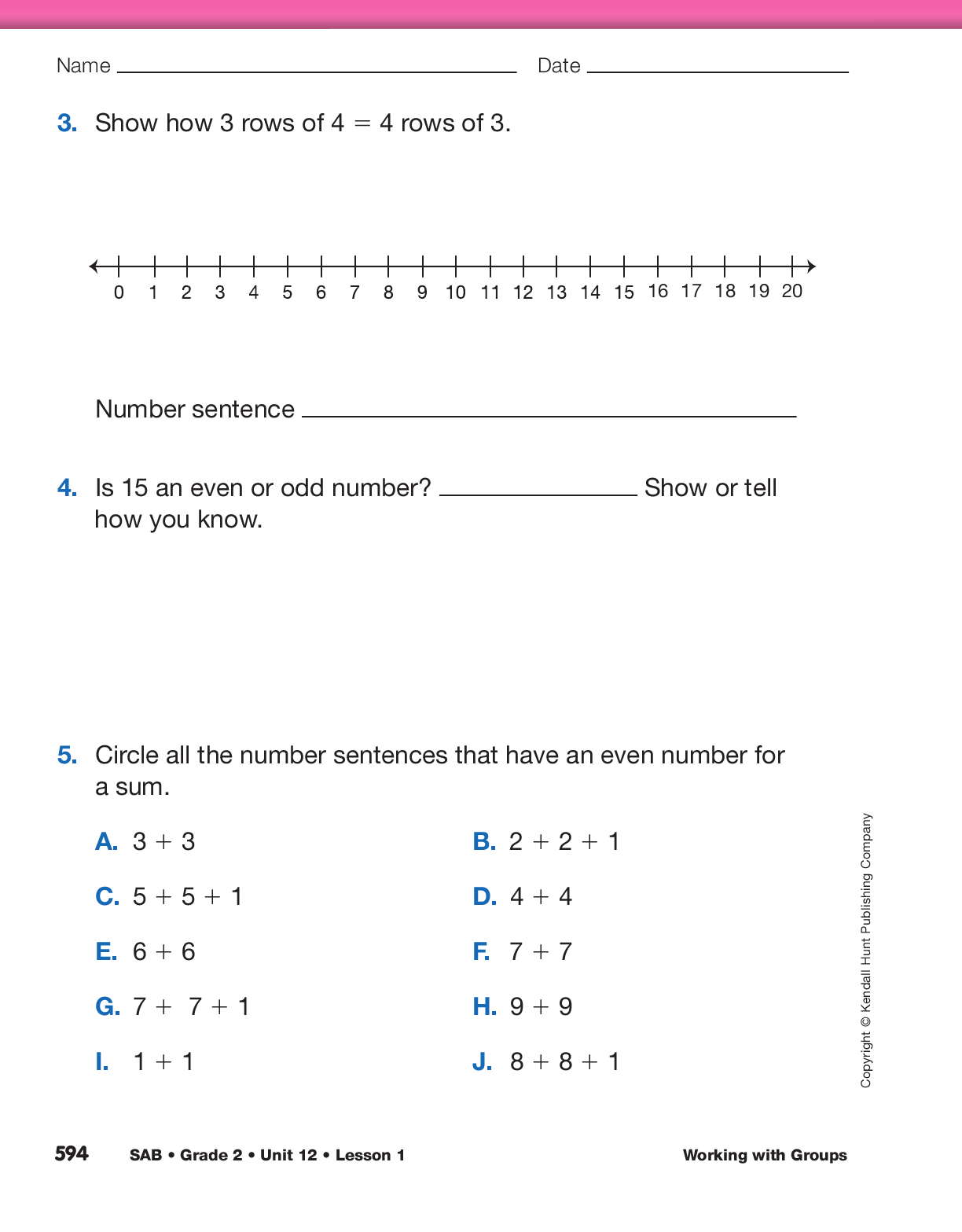Ask student pairs to solve the following problems
with constant math hoppers, rows of tiles, or drawings.
For each problem, have students write a number
sentence and draw their solutions on paper.
- There are 3 rows of 5 tiles. How many are there altogether?
- There are 4 rows of 3 tiles. How many are there altogether?
Upon completion, have students use the display of the
Constant Math Hopper Number Lines
Assessment Master, tiles, or drawings to demonstrate their solutions to the class.
- How did you determine what the number sentence should be? (Possible response: I know there are
3 rows and each row has 5 tiles. I added 5 + 5 + 5 = 15 tiles.)
If students write 5 + 5 + 5 = 15 for the first problem, ask:
- What is a related number sentence for this problem? (3 + 3 + 3 + 3 + 3 = 15)
Have students make connections between the representations on the
Constant Math Hopper Number Lines,
the tiles, and the drawings.
Assign the Equal Groups pages in the Student Activity Book to assess students’ abilities to solve
repeated addition problems and determine whether number sentences represent odd or even numbers. Have tiles or other counters readily available.
Use the Equal Groups pages in the Student Activity Book to
assess students’ abilities to determine whether a group of
objects has an odd or even number of members [E1];
represent multiplication problems using tiles, drawings,
number lines, rectangular arrays, and number sentences
[E2]; write a number sentence to express an even number as
a sum of two equal addends [E6]; and solve multiplication
problems using strategies [E7].
To provide targeted practice representing and solving
multiplication problems using number lines, give students
prepared copies of the
Constant Math Hopper Number Lines
Assessment Master. See Materials Preparation.















